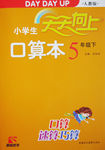题目内容
Here is a ticket for the exhibition. Whom would you rather _____ with you, Jack or Bob?
| A.go | B.have go | C.had go | D.going |
B
解析试题分析:考查句子结构。本题考查的结构为:have sb do sth让某人做某事;任何对其中的sb进行提问。可以使用还原法来再现句子结构:you would rather have Tom go with you.然后对其中的Tom进行提问,就出现了该句子。故B正确。
考点:考查句子结构
点评:本题实际上考查的是have sb do sth让某人做某事;任何对其中的sb进行提问。此类题目可以使用还原法来还原原来的句子结构。

 天天向上口算本系列答案
天天向上口算本系列答案For travellers who want to experience some of the history and mystery of the ancient world, here is a list of cool destinations for your next holiday.
Angkor Wat, Cambodia
Built in the 12th century, Angkor Wat (meaning “capital monastery”) was a temple in the ancient Khmer capital city of Angkor. It is Cambodia’s best-known tourist attraction and is famed for its beautiful architecture and reliefs. You’ll need at least three days to fully discover the delights of this magnificent site.
Machu Picchu, Peru
Machu Picchu was built high in the Andes Mountains of South America by the Inca in the 15th century. Although well preserved its exact purpose is unknown. It is famous throughout the world not only for its incredible design but also for the natural beauty that surrounds it. Give yourself a week to explore this magnificent site.
Stonehenge, England
The entire Stonehenge site was constructed over thousands of years. But why and how it was built remains a mystery. As the weather can be pretty bleak in winter and the crowds huge in summer, we suggest autumn should be the best time to visit these monster rocks.
Pompeii, Italy
When Mount Vesuvius erupted in 79 A.D., Pompeii was buried under many layers of ash, preserving the city exactly as it was when the volcano erupted. Because so many objects were preserved, scientists and visitors are able to better understand daily life in the ancient Roman Empire.
【小题1】Why may people want to visit Machu Picchu?
| A.To climb the Andes Mountains. | B.To discover how it was built. |
| C.To explore both history and nature. | D.To learn to speak Spanish. |
| A.Summer. | B.Spring. | C.Winter. | D.Autumn. |
| A.Pompeii. | B.Stonehenge. | C.Ankor Wat. | D.Machu Picchu. |
| A.In a travel magazine. | B.In a scientific journal. |
| C.In a history textbook. | D.In an adventure novel. |
